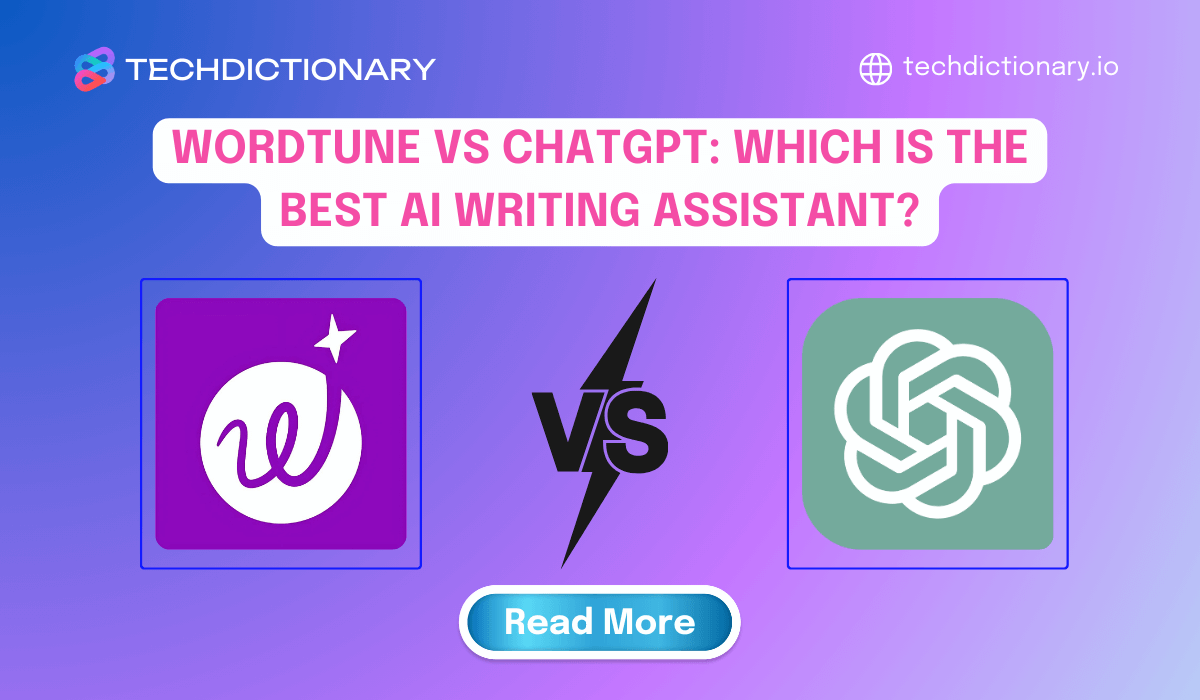
Ever written a sentence that’s okay, but you know it could be great? Or stared at a blank screen, just waiting for an idea to show up? Figuring out which AI writer to use can be tough. This guide breaks down Wordtune vs ChatGPT to help you find the perfect partner for your writing, whether you’re polishing a final draft or just getting started. Let’s dive in!
Before diving into the detailed comparison, here are the essential insights you need to know about these two AI writing assistants:
Think of Wordtune as an AI partner that helps you rephrase your sentences. It doesn’t write for you; instead, it gives you smart suggestions to make your words clearer, more professional, or more casual. It works seamlessly inside your browser, so you can fix an email in Gmail or a post on LinkedIn without ever leaving the page. It’s perfect for professionals who need to improve their writing on the fly.

Wordtune helps you rephrase your sentences
ChatGPT is like having a conversation with an AI that can write almost anything you ask it to. You give it a prompt, and it can draft an article, answer a tough question, or brainstorm ideas. It works like a chatbot, so you can keep refining your requests to get exactly what you need. It’s a powerful Wordtune alternative for users who want to generate new ideas, not just refine existing text.
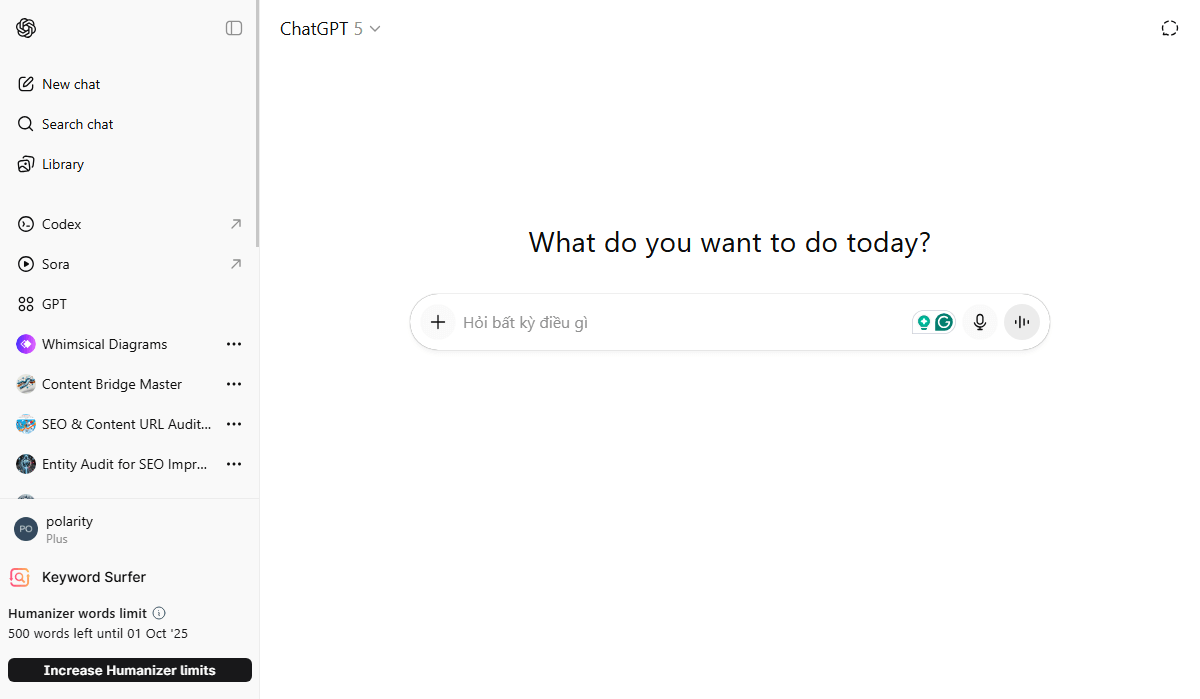
ChatGPT can write almost anything for you
You may be interested in:
Copy AI vs ChatGPT (2025): Which is the best AI Writing Tool?
Anyword vs ChatGPT: Which is the best for Writers in 2025?
Alright, let’s get into the details. To really see the difference between these tools, we looked closely at five key areas. This will help you see where each one truly shines and figure out which is the better sidekick for the way you write.
| Feature | Wordtune | ChatGPT | Winner |
| Core Functionality | Text rewriter & enhancer | Content generator & conversationalist | Tie (depends on needs) |
| Content Versatility | Writing-focused | Multi-purpose AI assistant | ChatGPT |
| Advanced Editing | Advanced, built-in tools | Basic, requires instructions | Wordtune |
| Factual Accuracy | High (works with existing content) | Variable (prone to hallucinations) | Wordtune |
| Workflow Integration | Seamless browser/app integration | Standalone platform primarily | Wordtune |
The best way to understand these two tools is to think “Editor vs. Creator.” Their core purpose is completely different, so one isn’t better than the other—they just do different jobs. Wordtune is the editor built to work on text you’ve already written to make it clearer, sharper, and more effective.
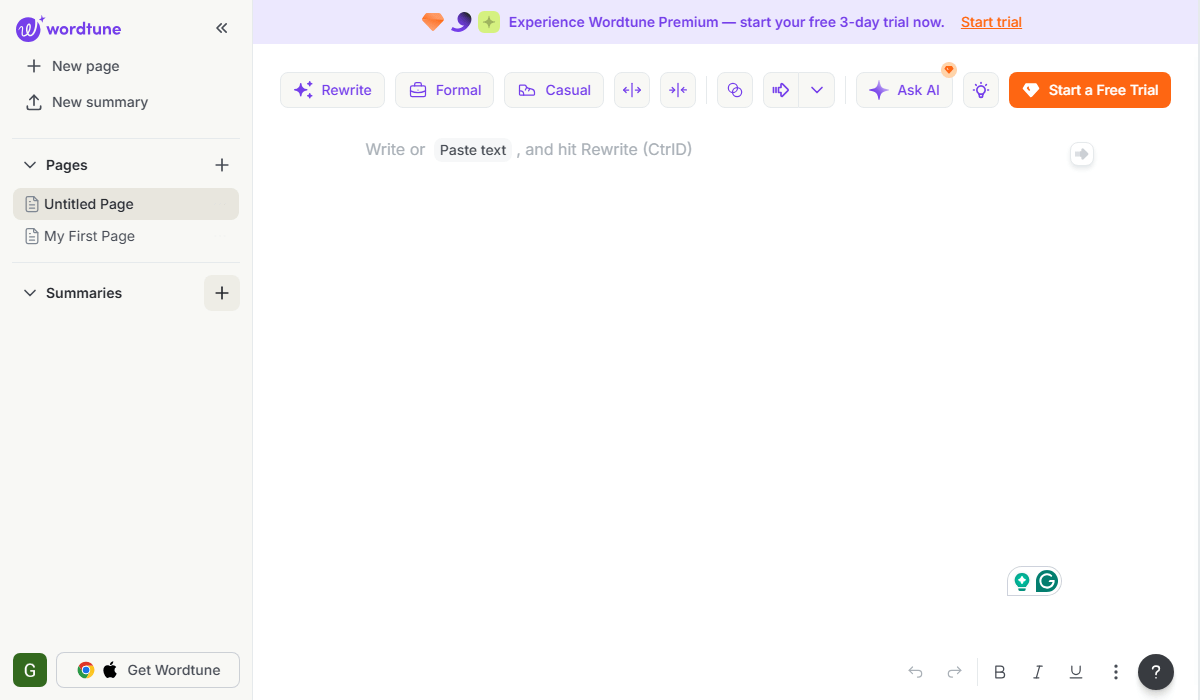
Wordtune refines your existing text
In contrast, ChatGPT is the creator, designed to generate brand-new content from a prompt. Because their goals don’t overlap, the winner is whichever one you need for the task at hand. If you need to polish a draft, Wordtune wins. If you need to write that draft in the first place, ChatGPT wins.
The Winner: Tie
Here, the tables are turned, and ChatGPT’s incredible range makes it the undisputed champion. Wordtune is a master of one craft: improving your writing. While it does that job exceptionally well, that’s where its capabilities end.
ChatGPT, on the other hand, is like a multi-tool that can handle many different jobs. You can ask it to write a poem, help you debug code, explain a scientific concept, or even draft a business plan. Because it can do so much more than just writing, it easily wins in overall usefulness.
The Winner: ChatGPT
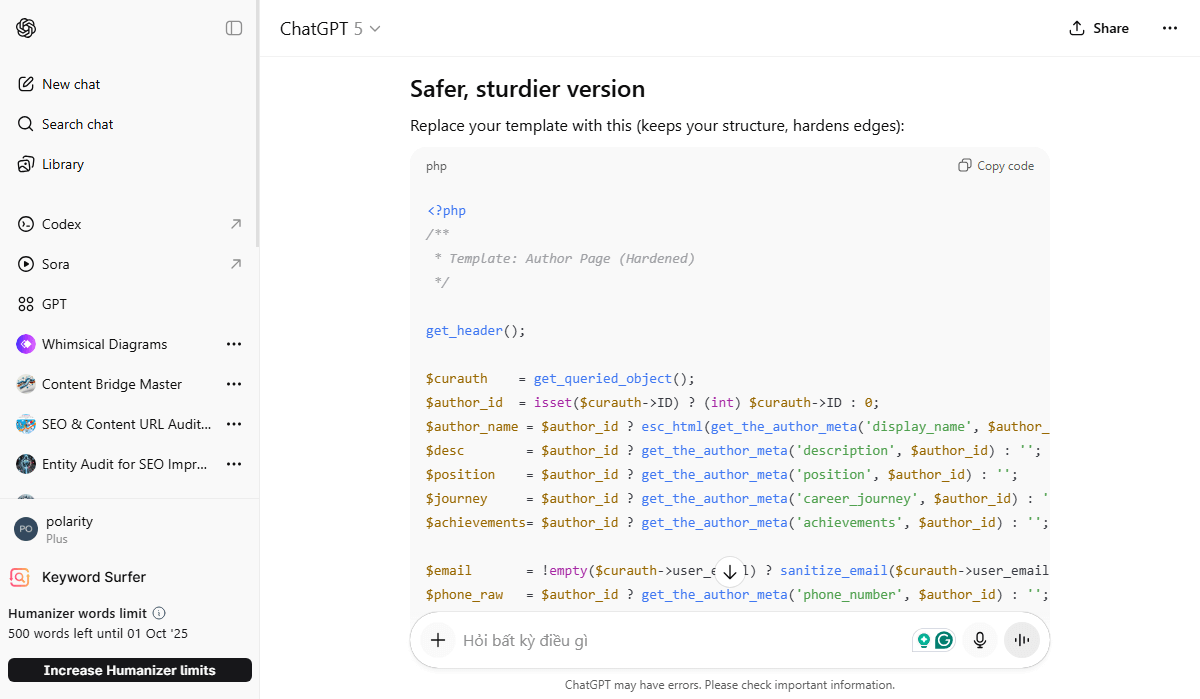
Using ChatGPT to debug code
You may be interested in:
ProWritingAid vs Wordtune (2025): Which is the best AI Writing Assistant?
Jasper vs Wordtune (2025): Which is the Best AI Writing Tool?
Wordtune offers specialized editing features designed specifically for text refinement. Its tools include tone adjustment (formal to casual), length modification (expand or shorten), sentence restructuring, and contextual synonym suggestions. The platform also provides “Spices” features that can add relevant statistics, analogies, or examples to strengthen your arguments while maintaining your writing style.
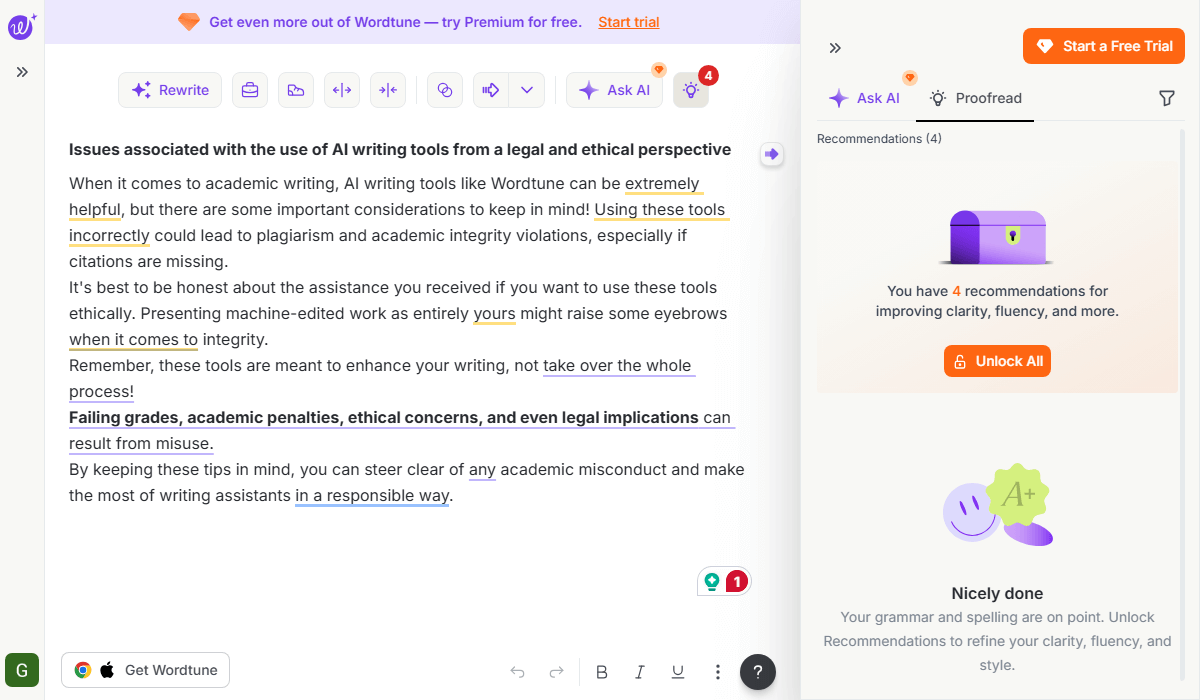
Wordtune offers one-click editing tools
ChatGPT provides basic editing capabilities through conversation but lacks dedicated refinement tools. While you can ask it to adjust tone or rewrite sections, the process requires detailed prompts and back-and-forth communication. It doesn’t offer the quick, one-click improvements that Wordtune provides, making iterative editing more time-consuming and less intuitive for users.
The Winner: Wordtune
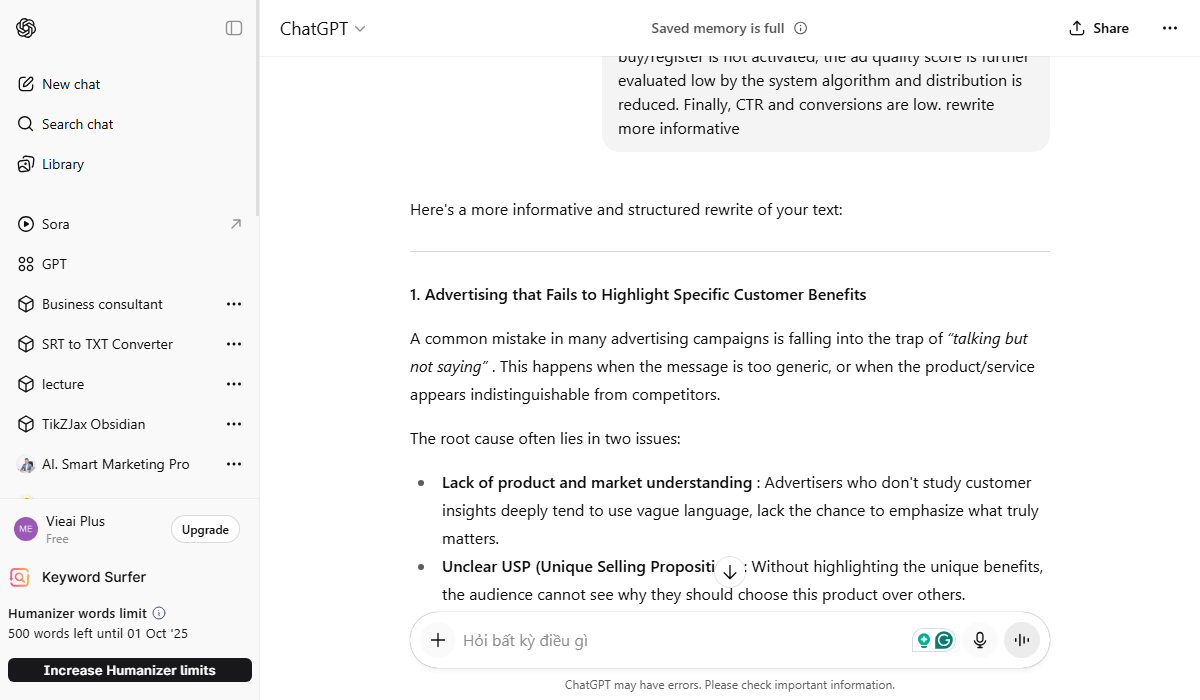
Editing in ChatGPT needs detailed prompts
For any writing where facts are crucial, Wordtune is the far safer choice. Its advantage comes from its design: it only reworks the text you provide, so it can’t invent new, incorrect information. Its job is to improve your language, not your facts.
ChatGPT’s generative nature is its biggest weakness here. It can sometimes “hallucinate” — meaning it might state wrong information with great confidence. This risk means you have to carefully check all the facts in its writing yourself, which makes Wordtune the more reliable tool when accuracy is a must.
The Winner: Wordtune
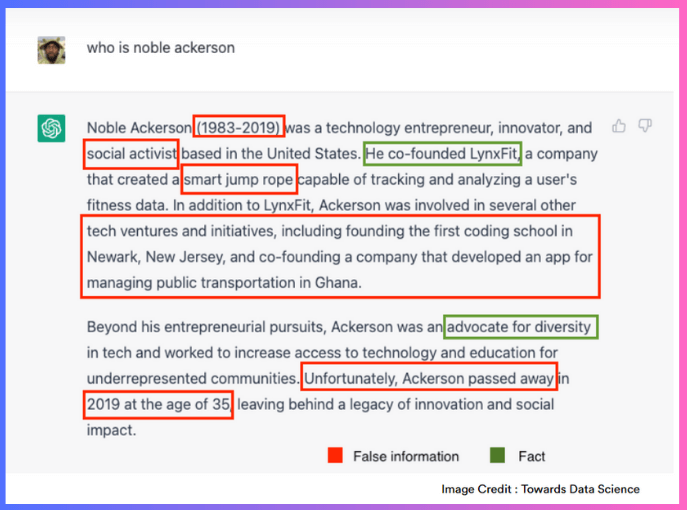
ChatGPT can invent wrong facts
When it comes to convenience in your daily work, Wordtune has a massive advantage. It’s built to work right where you are through browser extensions that integrate seamlessly into Gmail, Google Docs, and more. This means you get real-time suggestions without ever breaking your writing flow.
ChatGPT, on the other hand, operates as a standalone website. To use it, you have to stop what you’re doing, switch tabs, type your prompt, and then copy the text back. This extra step creates friction and makes Wordtune the clear winner for anyone who values a smooth, uninterrupted workflow.
The Winner: Wordtune
You may be interested in:
QuillBot vs. Wordtune: Which Is the Better Paraphrasing Tool in 2025?
Writesonic vs ChatGPT: Which is the best AI Writing Tool?
| Aspect | Wordtune | ChatGPT |
| Pros | ✅ Seamless workflow integration
✅ Preserves original voice ✅ High factual accuracy ✅ Advanced editing tools ✅ Professional writing focus |
✅ Versatile content creation
✅ Creative writing capabilities ✅ Conversational interface ✅ Cost-effective for multiple uses |
| Cons | ❌ Limited content generation
❌ Writing-focused only ❌ Requires existing text |
❌ Factual accuracy concerns
❌ Limited integration ❌ Requires careful prompting ❌ Workflow disruption |
Understanding the price is one thing, but knowing the policies behind it is crucial. Here’s a side-by-side comparison of the important subscription policies for Wordtune and ChatGPT.
| Wordtune | ChatGPT | |
| Free Plan | Yes, 10 rewrites/day. | Yes, with usage caps. |
| Credit Card for Free | No. | No. |
| Cheapest Paid Plan | $13.99 | $20 |
| Downgrade Policy | Keep benefits until the billing cycle ends. | Keep benefits until the billing cycle ends. |
| Refund Policy | No refunds offered. | Yes, possible (14 days in EU/UK). |
Our advice: Always start with the free plans to get a feel for which tool fits better into your workflow before committing to a paid subscription.
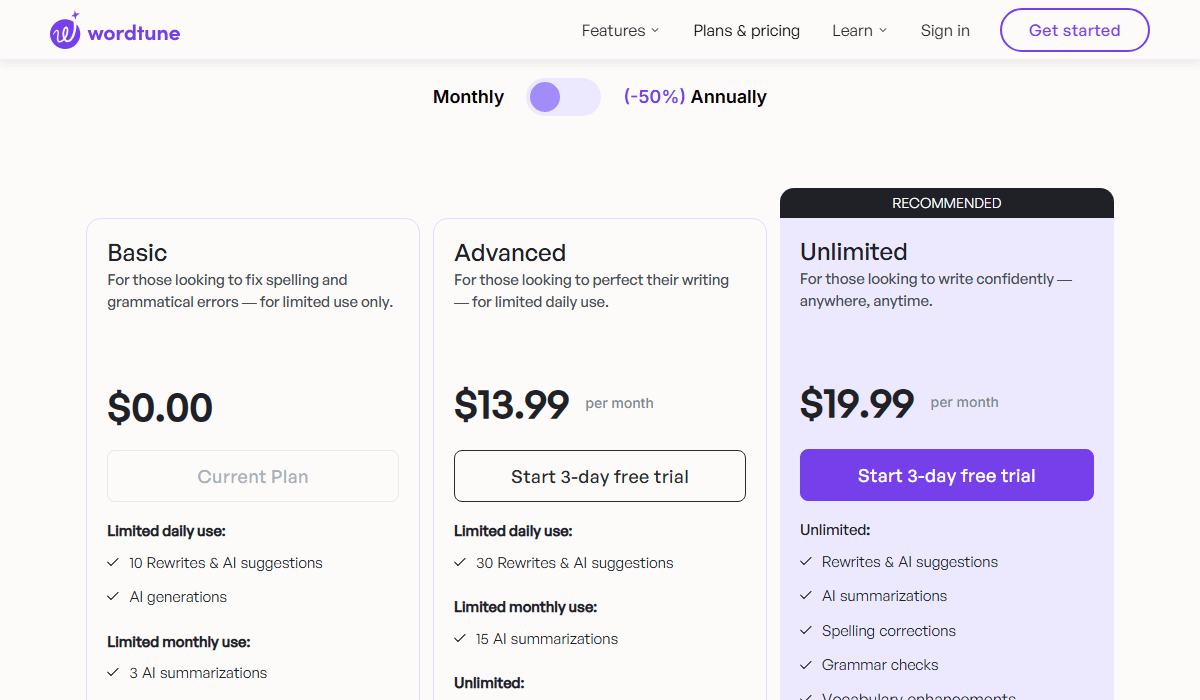
Wordtune Pricing Plan
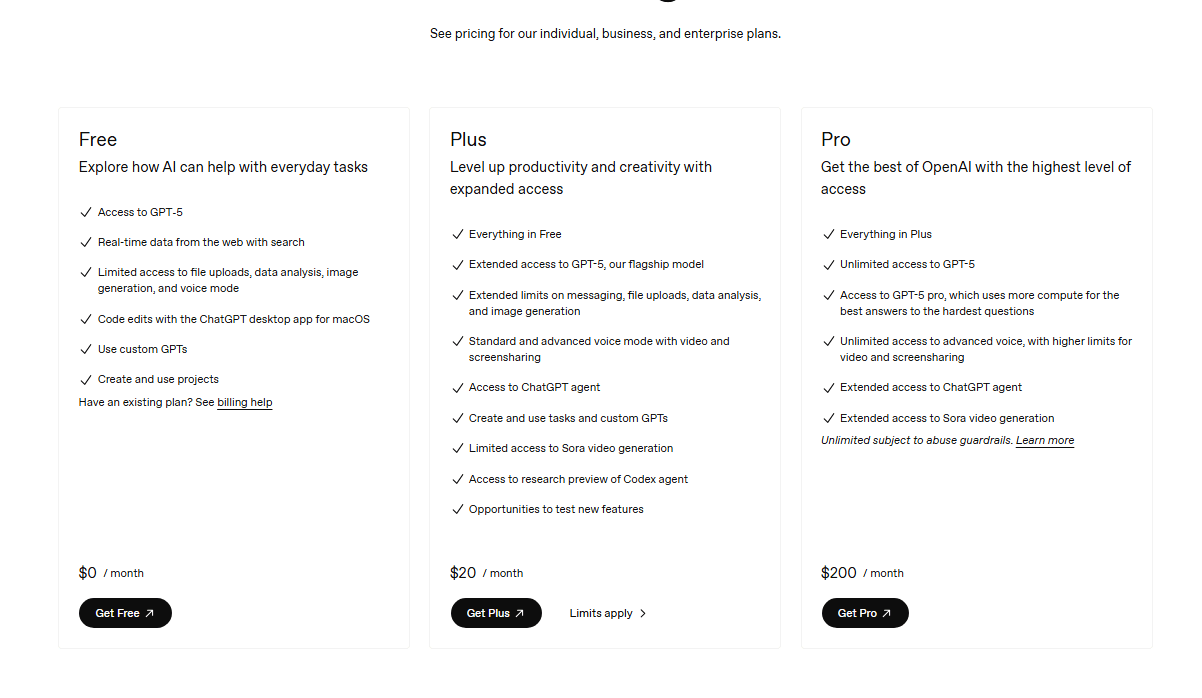
ChatGPT Pricing Plan
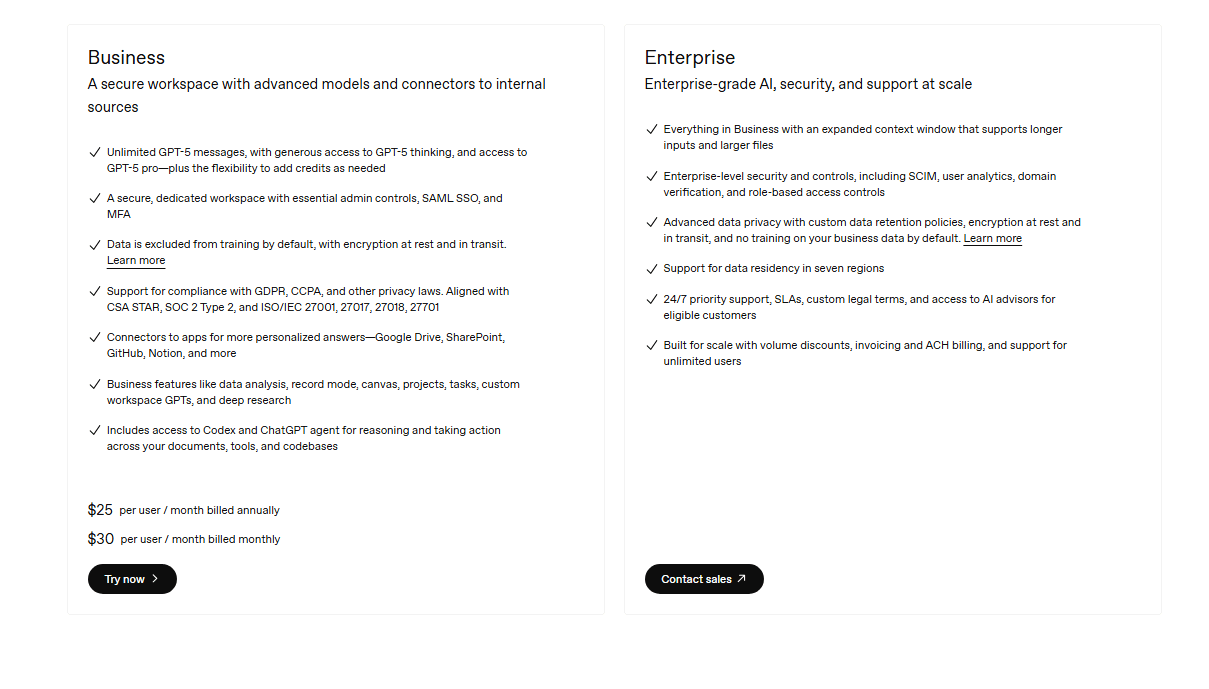
ChatGPT Advanced Pricing Plan
Selecting between Wordtune vs ChatGPT requires evaluating several key factors based on your specific requirements:
What’s your main goal?
How important is convenience?
Can you risk factual errors?
What does your budget cover?
You may be interested in:
RightBlogger vs ChatGPT: Which Is Better for SEO Blogging in 2025?
Grammarly vs ChatGPT: Which is better for proofreading in 2025?
After putting both tools to the test, it’s clear there’s no single “best” one—it all comes down to you.
Choose Wordtune if you’re:
Choose ChatGPT if you’re:
Pro Tip: The best solution might be to use both. Use ChatGPT to brainstorm and get a rough draft on the page, then use Wordtune to polish it into a masterpiece.
What’s your experience with AI writing assistants? Share your thoughts in the comments below, and don’t forget to follow TechDictionary for more comprehensive AI tool comparisons!
You may be interested in:
Wordtune vs Outwrite: Which is the Best AI Writing Tool?
GravityWrite vs ChatGPT (2025): Which is the best AI Writing Tool?
Wordtune vs Grammarly (2025): Which Is The Best AI Writing Tool?

